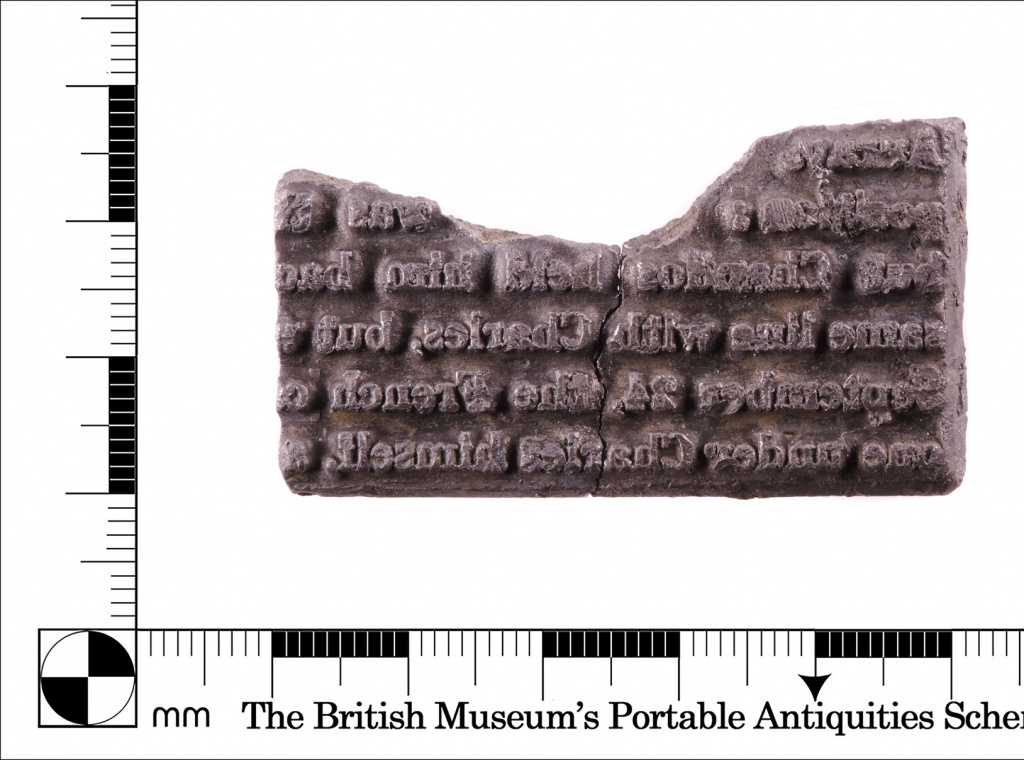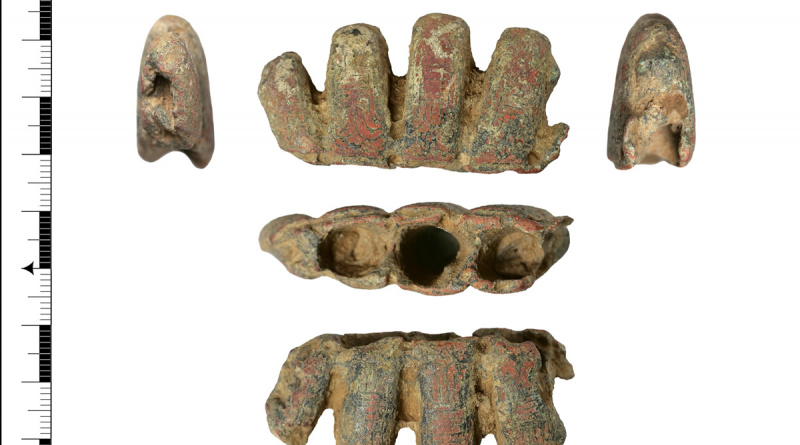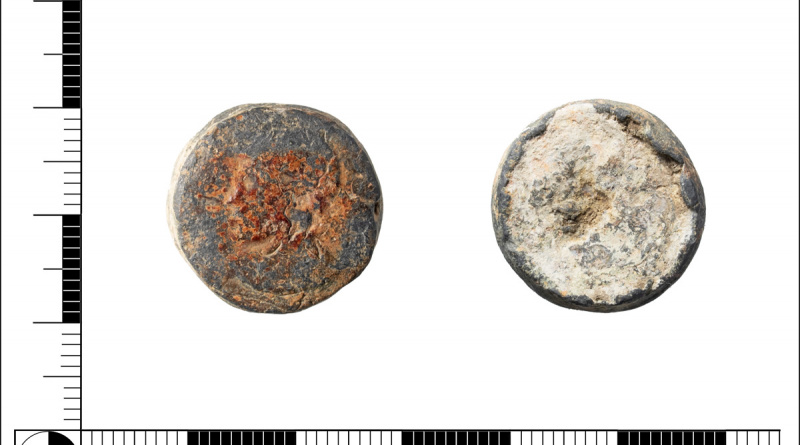PAS Review (w/e 28/04/23) – The Happy Warrior
PAS Review (w/e 28/04/23) – The Happy Warrior
My selection of the detecting finds recorded at the PAS in the week ended 28 April 2023.
Featured Find
Printing press block of The Happy Warrior
This is part of a lead printing press block from the start of the 20th century. It has a double historical significance as it relates to a 14th century conflict told to encourage young men during a 20th century war.
The PAS record says that it reads “Auray [ ] p[]: [ ] was [] but Chandos held him ba[] same line with Charles, but September 24, the French c[] []e under Charles himself, a[]” and suggests that it refers to the Battle of Auray, which was fought in September 1364.
The Happy Warrior

I thought that there was probably enough text to trace the actual book. It’s from The Book of the Happy Warrior by Sir Henry Newbolt, published in 1917.
At the start of the First World War, Newbolt joined the War Propaganda Bureau to help boost morale and support for the war.
Author of many similar books, his best known poem, written in 1892 is Vitaï Lampada. It describes how a schoolboy learns the selfless commitment to duty that he’ll need later as a soldier. It starts:
There’s a breathless hush in the Close to-night—
Ten to make and the match to win—
A bumping pitch and a blinding light,
An hour to play and the last man in
Betrand du Guesclin and the Black Prince
The Happy Warrior is a collection of short stories and the text on the block is from a story called Betrand du Guesclin and the Black Prince. It does indeed describer the Battle of Auray of 1364. The full passage, on page 135 of the book, reads:
Cocherel was a brilliant victory, but it did not decide who was to be Duke of Brittany. There was a proposal for Charles de Blois and John de Montfort to share the duchy, each bearing the title, but it came to nothing ; and towards the end of September the two claimants, with their armies, were facing one another outside the town of Auray. Charles had the more troops and the better position : Montfort was the more eager to attack, but Chandos held him back. Du Guesclin took the same line with Charles, but was overruled. On Sunday, September 24, the French came out in three divisions, one under Charles himself, a second under du Guesclin
Public schoolboys
The book is intended to encourage boy at public schools to lead chivalrous lives in the service of the country. It claims that “old method of training the young squires to knighthood produced our public school system“.
The Betrand du Guesclin story is particularly aimed at boys who may be finding their school days difficult; the author says “I particularly recommend to you the lives of Bertrand du Guesclin and the Chevalier Bayard …for both those great and chivalrous gentlemen were downright scallywags in their boyhood“




